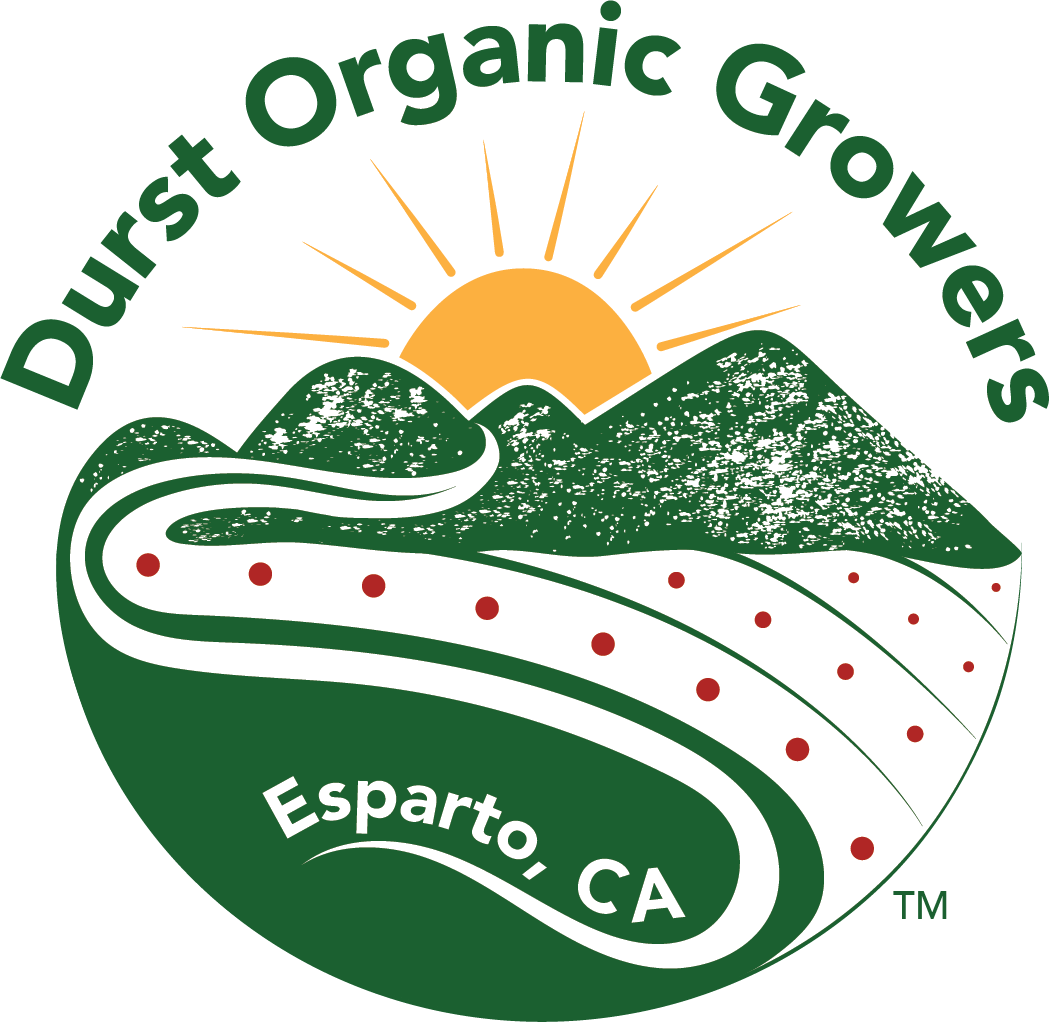July was a record-breaking month of a heat spell for us in Yolo County. We’re used to triple digit summer temperatures, but not for this long of a stretch (or this high of temps!). Through that heat, we’ve been harvesting tomatoes for about 65 days now! We both can’t believe it’s been that long and are also sure it’s been longer (shouldn’t the season be almost over by now?).
Read MorePlanting season is a frenzied season. There is a short window in which we need to “terminate” our cover crops – we talked about that in the last letter – and prepare the field to be planted anew in “cash” crops. Getting all the beds in all the fields prepared at once is tricky (or, rather, impossible). We have a limited number of tractors and tractor drivers, and a seemingly unlimited amount of work to get done in what feels like a very limited amount of time.
Read MoreIt’s early April and we’re starting to believe Spring is here. The almond blossoms of our neighbors’ orchards have all fluttered to the ground, the oak trees dotting the hillsides are showing their bright green new leaves, and our asparagus is starting to emerge out of the ground at a steady pace.
Read MoreFebruary is a slow time of year here on our farm, especially during wetter years. The rain, though much appreciated, keeps us out of the fields – just as they dry out, another storm comes! – resigning us to equipment repairs and maintenance, site cleanup projects, and fine-tuning our plans for the coming seasons. And, now, setting up for asparagus!
Read MoreBefore welcoming the winter season, we had a few projects needing attention. The biggest one, outside the scope of our normal annual tasks, was an irrigation infrastructure project.
Read MoreA Winter Poem, written by Jim Durst 2023
Read MoreWhile we, and many other farmers, still believe in the merits of certified organic, we feel the USDA is bending to well-financed lobbying efforts and is no longer upholding the standards outlined by the National Organic Program.
Read MoreThe process of taking down the tomato plants is not quite as tedious as getting them going, but is a cumbersome task no less.
Read MoreWhile Labor Day may mark an end of summer for some, we generally look towards the crops to let us know when seasons end. September is a transitional period where summer and fall blend together, the seasonal crops and activities overlapping. Whether it’s “late summer” or “early fall,” the between time is full of excitement as we begin harvesting winter squash (also known as hard squash), officially finish with watermelon (but then continue to bring in smaller harvests from our grafted plants that are still somehow looking great), continue on with harvesting tomatoes (while starting to take down early plantings), and begin planting for fall (true fall, that is).
Read MoreRight now, we’re harvesting the type of fruits we dream about in winter. Bright red watermelon so crisp, sweet, and juicy it “pops” when you cut into it; juice dripping down your hand as you enjoy a slice. The sweetest fresh corn and refreshingly delicate cucumbers. A medley of melons – true summer flavors. And, perhaps, the biggest treat: soil-grown, vine-ripened, peak-summer tomatoes.
Read MoreAbout a month behind schedule, our asparagus harvest began in late March and is still underway. We hope you’ve been able to enjoy some of this spring treat, now possibly paired with peas! Our sugar snap pea harvest is just now starting! It’s a little later than usual for us due to planting late and cool spring growing conditions.
Read MoreThis time of year, people start asking about our asparagus. When will it be ready?
Read MoreHello, again, and Happy New Year! We took a pause on our newsletter, as we didn’t have much in the way of “news” to share over the last few months. A bit of a winter hibernation felt fitting. Around November, after we finish packing all our winter squash for the season, our farm becomes pretty quiet as people take off for winter vacations and the fields are put to rest for the cold months ahead.
Read MoreJust a few more weeks of harvest before our season wraps up
Read MoreIt’s the last full calendar month of summer! The summer is slipping away — now that we’ve passed the summer solstice and are flying into fall, the days are slowly, yet noticeably, getting shorter in daylight hours. But they’re still long in to-do’s and high in heat!
Read MoreEarly summer on the farm is a whirlwind of “organized chaos.”
Read MoreTake a look at what we’ve been busy with at Durst Organic Growers this winter!
Read MoreIt’s a time of transition: Fall on The Farm. Fall seems to be a time of evaluations, brainstorming ideas, and setting the stage for the coming year.
Read MoreRead on to see what we’re up to in the Hungry Hollow during late summer (spoiler alert: harvest!)
Read MoreThe calendar and our crops agree: it’s officially summertime!
Read More



















